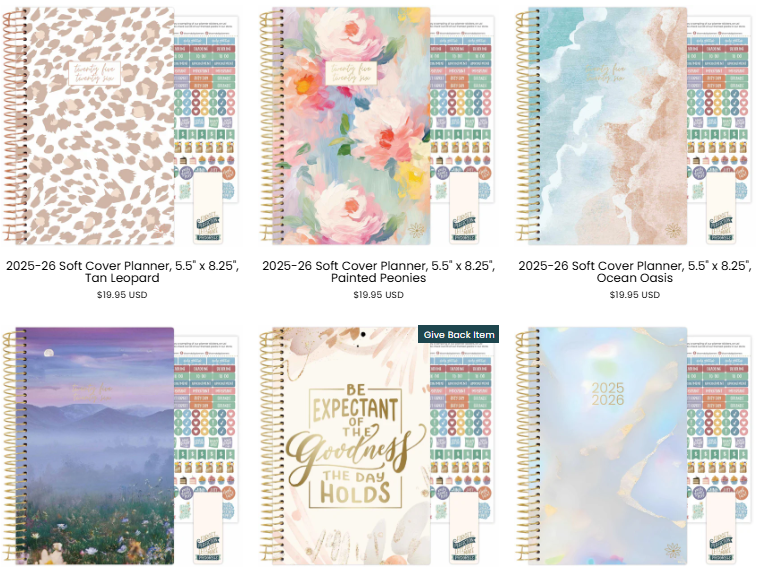Deadlines, group projects, exams, and part-time jobs can stack up fast. Without a clear system, it’s easy to miss details or scramble at the last minute. A planner gives you a simple way to map out all those moving parts, so you don’t have to carry them in your head.
In this blog, we will walk you through how to pick a planner that fits your life. We’ll talk about layout types, useful features, and how to match a planner to your personal style. By the end, you’ll have a sense of what to look for, so your choice feels less like guesswork and more like a tool you’ll want to use daily.
Understanding Layout Options
Not all academic planners look the same, and the format you choose will shape how you use it. Some students want the full month spread out; others need space for each day’s details. That’s why it’s worth pausing to see how layouts work.
- A monthly layout works like a bird’s-eye view. It’s good for jotting down exam dates, big deadlines, or club meetings. When you glance at the grid, you know what’s coming without digging into smaller notes.
- A weekly format breaks the month into shorter spans, giving you room to spread tasks across days. This option is ideal if you balance assignments from several classes or keep up with activities outside school. You can map out your week to see if a certain day is overloaded and shift tasks around.
- A daily setup is for students who prefer detail. If you like time-blocking or want to plan by the hour, a daily spread gives you plenty of space. It’s useful for those with busy schedules or anyone who wants to track both work and habits in one place.
When you’re choosing an academic planner, think about how much detail you need. A month spread might be too broad for heavy workloads, while daily pages might feel too packed if you only jot down key events. The right format is the one you’ll use.
Features That Make a Difference
Once you’ve settled on a format, the next step is to look at design details. These small things can affect how much you enjoy using the planner day after day.
- Paper quality matters if you like using pens or markers. Thick paper keeps ink from bleeding through, so your notes stay neat.
- Durability is another big point. Planners get tossed in bags, flipped through, and used often. A sturdy cover and binding help it hold up for the year.
- Size and weight also play a role. A large planner gives more writing space but takes up more room in your bag. A smaller one is easier to carry but can feel cramped if you write a lot.
Some planners add extras like goal-setting sections, habit trackers, or note pages. These can help you tie your academic work to personal growth, tracking sleep, workouts, or study habits alongside classwork.
Matching a Planner to Your Style
Every student works in their own way, and the best planner fits into that rhythm.
- If you’re structured and like step-by-step plans, go for a layout with prompts, checklists, or reflection spaces. These features give you more than dates; they guide your planning.
- If you’re visual, a colourful design or space for stickers might keep you engaged. Adding color-coded notes by subject or task type can make it easier to scan your week.
- If you prefer simplicity, a clean and minimalist design may be best. It gives you space for what matters without extra clutter.
Tips to Use Your Planner Well
Buying a planner is only part of the story, but you also need habits that make it useful.
Set aside a short time each day, maybe in the morning or before bed, to update your planner. This small step keeps your plans fresh and helps you adjust if something shifts.
Try color-coding tasks by class or priority level. For instance, one shade for exams, another for homework, and a third for personal goals. At a glance, you’ll see what category needs your time.
Break big projects into smaller steps instead of writing down one large task. When you mark off progress piece by piece, the project feels less overwhelming.
You can also personalize your planner. Some students use sticky notes, others add doodles or washi tape. Small touches make it feel more like your own, which can motivate you to keep using it.
Conclusion
The right planner is a way to keep your time and energy in sync with your goals. Choosing an academic planner that matches your habits, and workload gives you a tool you’ll turn to often, not just once in a while.
Looking ahead, the skill of managing your schedule won’t end with school. The habits you build now, planning ahead, breaking down tasks, and reflecting on progress, can carry into work and life beyond the classroom. In that sense, a planner is less about this year and more about shaping how you approach the years to come.



